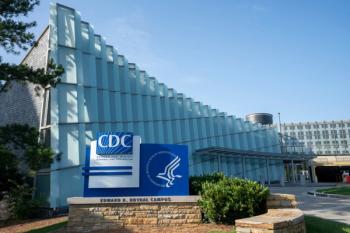
Emerging Strategies to Manage Pediatric-Onset Multiple Sclerosis
Key Takeaways
- Pediatric-onset MS (POMS) is more inflammatory than adult-onset MS, with frequent relapses and cognitive issues, affecting 7.6% of MS cases.
- The 2017 McDonald criteria improved POMS diagnostic accuracy, with 2024 revisions expected to further reduce diagnostic delays.
Discover the latest insights on pediatric-onset multiple sclerosis, emphasizing early intervention and high-efficacy therapies for improved outcomes in children.
Early recognition and intervention with high-efficacy therapies (HETs) are crucial for improving long-term outcomes in pediatric-onset
Pediatric-onset MS (POMS), defined as MS onset before 18 years of age, accounts for approximately 7.6% of all MS cases (global incidence of 0.87 per 100,000 patients) and typically presents around 14 years of age.2 The disease course in POMS is often more inflammatory, characterized by more frequent clinical relapses and a greater number of magnetic resonance imaging (MRI) lesions compared with adult-onset MS (AOMS).3 People with POMS also experienced poor cognitive outcomes. The review noted a higher female-to-male ratio in POMS (2.8:1) compared with AOMS (1.8:1).1
The diagnostic landscape for POMS has evolved with the 2017 McDonald criteria, which improved diagnostic accuracy, and proposed revisions in 2024 aimed to reduce diagnostic delays by incorporating advancements in imaging and biomarkers.5 Neuroimaging revealed that people with POMS exhibit a higher total lesion burden early in the disease course compared with AOMS, including a greater T2-lesion count and volume and higher rates of gadolinium-enhancing lesions.1
Although a few randomized controlled trials (RCTs) of disease-modifying therapies (DMTs) have been performed specifically in POMS, observational studies have consistently demonstrated the benefits of HETs in this population. These therapies were associated with lower relapse rates, slower disability progression, and decreased MRI disease activity compared with low- to moderate-efficacy therapies (LMETs).
Fingolimod, an oral disease-modifying therapy (DMT) approved for POMS (aged 10 years and older), showed an 82% reduction in annualized relapse rate (ARR; 0.12 vs 0.67) compared with interferon β-1a in the PARADIGMS phase 3 trial, which included 215 patients. Similarly, studies on natalizumab, an infusion-based hormone replacement therapy, demonstrated a decrease in ARR to 0.1±0.3 during therapy compared with 2.3±1.3 before treatment in an Italian registry study of 101 youth with MS. B-cell depleting therapies like rituximab and ocrelizumab also showed significant reductions in ARR in retrospective POMS cohorts. A multicenter retrospective study of 61 POMS patients treated with rituximab saw ARR decrease from 0.60 to 0.03.
The review emphasized that early initiation of DMT in POMS was supported by studies showing more relapses with delayed treatment. For instance, initiating DMT more than 2 years post-diagnosis increased the risk of reaching a sustained Expanded Disability Status Scale (EDSS) of 4 by 2.52-fold compared with starting therapy within 2 years. People on HETs had significantly lower relapse rates (ARR, 0.22 vs 0.49; P < .001) and a reduced risk of new/enlarging T2 lesions (HR, 0.51, P < .001) compared with those on injectable DMTs.
Beyond pharmacologic interventions, the review touched upon non-pharmacologic approaches. A multicenter study in the USA found that each 10% increase in energy intake from fat increased relapse risk by 56% (HR, 1.56; 95% CI, 1.05-2.31; P = .027), whereas each additional 1-cup equivalent of vegetable intake reduced relapse risk by 50% (HR, 0.50; 95% CI, 0.27-0.91; P = .024). Additionally, higher levels of physical activity correlated with lower disease activity, fatigue, and depressive symptoms in POMS.
The authors concluded that, although most therapies approved for adults with MS could be safely used in POMS, the limited number of formally approved therapies for children remained a challenge. They called for increased inclusion of pediatric patients in clinical trials to further expand access to effective treatments and improve the long-term prognosis and quality of life for people with POMS.
References
1. Aljomah LS, Yeh EA. Pediatric multiple sclerosis: improving outcome through high-efficacy therapies. Neurotherapeutics. Published online June 27, 2025. doi:10.1016/j.neurot.2025.e00631
2. Renoux C, Vukusic S, Mikaeloff Y, et al. Natural history of multiple sclerosis with childhood onset. N Engl J Med. 2007;356:2603-2613. doi:10.1056/NEJMoa067597
3. Langille MM, Rutatangwa A, Francisco C. Pediatric multiple sclerosis: a review. Adv Pediatr. 2019;66:209-229. doi:10.1016/j.yapd.2019.03.003
Newsletter
Stay ahead of policy, cost, and value—subscribe to AJMC for expert insights at the intersection of clinical care and health economics.





























































